Adelaide 2015. Adelaide 2023. Two losses, triggering two emphatic changes in playing styles of two teams. Almost revolutionary ones.
England were knocked out of the 2015 men’s ODI World Cup in Australia and New Zealand by Bangladesh when they failed to chase down 275.
India vs Netherlands WC: India crush Netherlands by 160 runs
It prompted a white-ball reboot from skipper Eoin Morgan and ECB director Andrew Strauss, where aggressive batting was prioritised and scores more than 350 became a norm.
Nowhere was it more evident than in 2019, the year that England hosted the ODI World Cup. In 22 games that England played from the start of 2019 till the end of that World Cup at Lord’s, they reached the 350-mark seven times, hitting 159 sixes and 535 fours. Clearly, boundary-hitting was prioritized and hence batters like Jason Roy, Jonny Bairstow, Jos Buttler and Morgan himself bought into the idea. Joe Root was assigned the anchor’s role and a deep batting line-up, full of batters and all-rounders that could strike it big, delivered the goods.
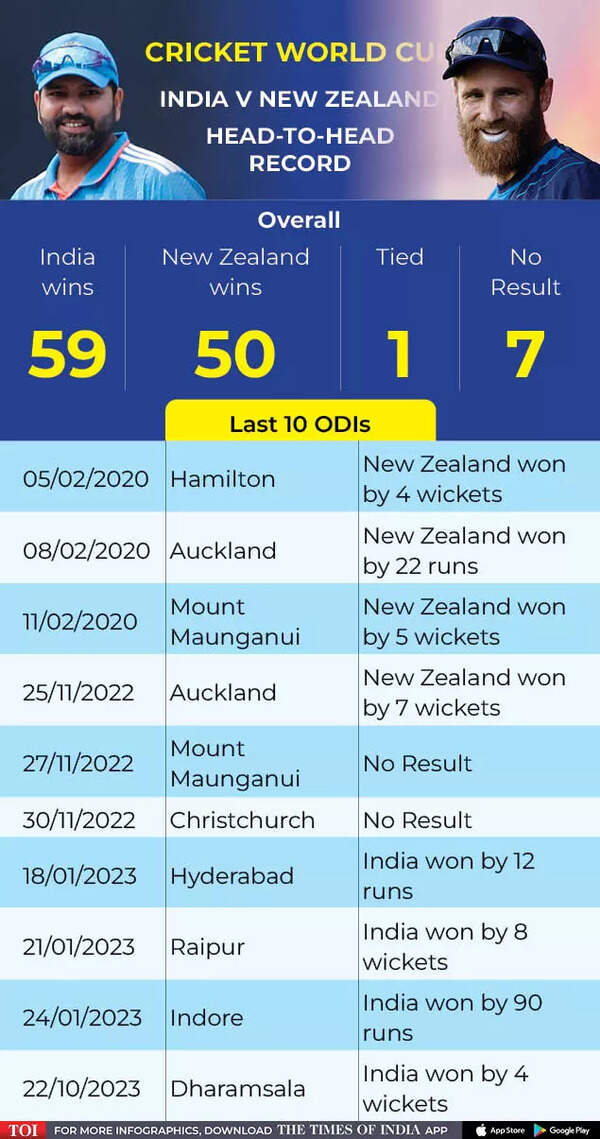
India, who reached the semifinal of the 2022 T20 World Cup in Adelaide, suddenly developed stage fright, and got too conservative against England in their semifinal.
They could score just 38 in the powerplay when 50-plus was the norm throughout the event. After the first 10 overs, India had limped to 62 for 2.
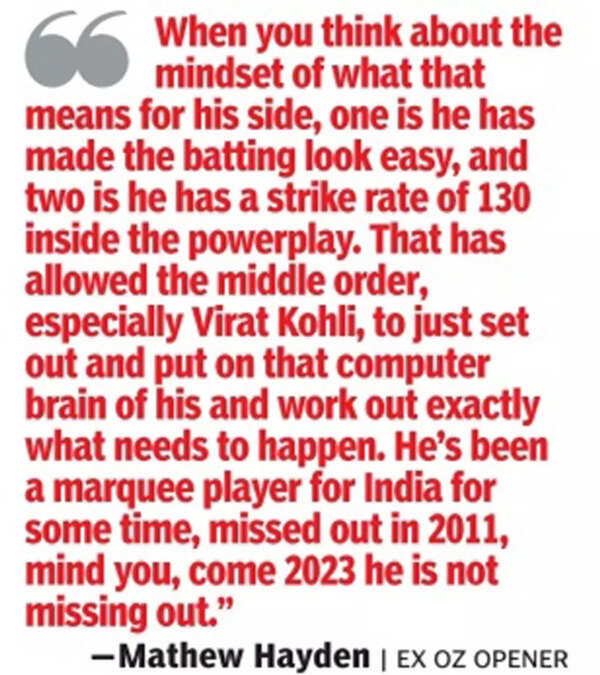
Skipper Rohit Sharma himself had laboured to a 28-ball 27. Virat Kohli scored a 40-ball 50 and only Hardik Pandya‘s 33-ball 63 took India to 168 for 6, which on an Adelaide Oval road, was way below par against an attack that lacked serious pace. England got the runs without losing a wicket as Alex Hales and Jos Buttler stormed to the target in just 16 overs.
Visuals of a teary-eyed Rohit with his head in his hands near the Indian dug out and coach Rahul Dravid offering a comforting pat on the shoulders are still fresh in the minds of Indian fans.
That defeat and India’s approach prompted a clear out in the Indian T20 side with both Kohli and Rohit out.
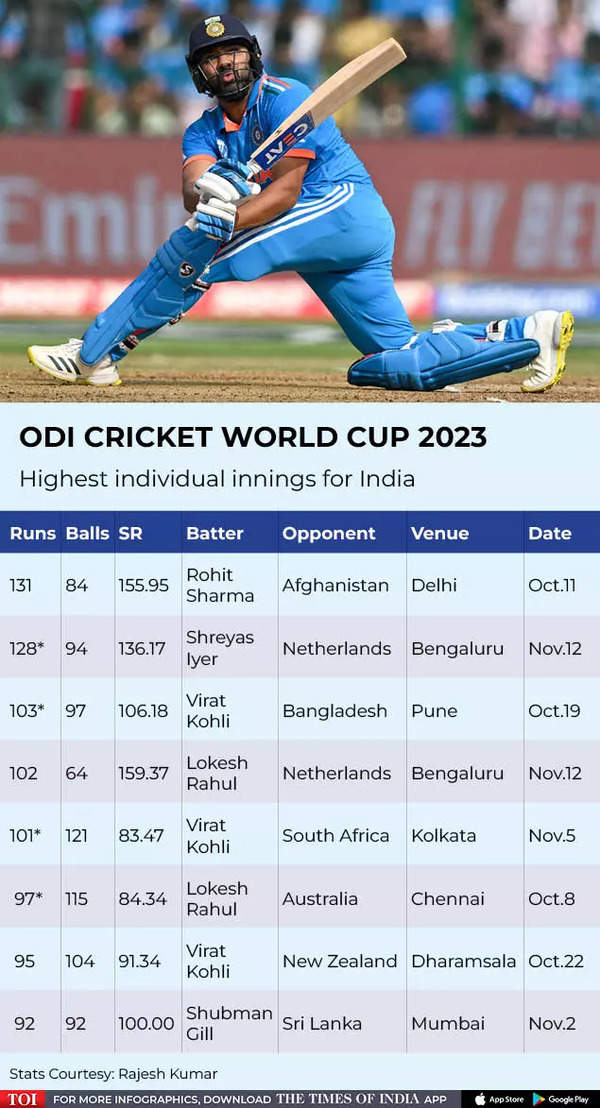
It also triggered a change in the way India approached batting, at least in ODIs.
India have played 30 games in this World Cup year, including nine matches in the tournament. In those 30 games, India have posted 350-plus eight times, the most by any team in a calendar year. Indian batters have also struck a staggering 215 sixes in those 30 games.
And guess who has taken it upon himself to hit the speed button? The man who had his head in his hands, in Adelaide, about a year back. Rohit.
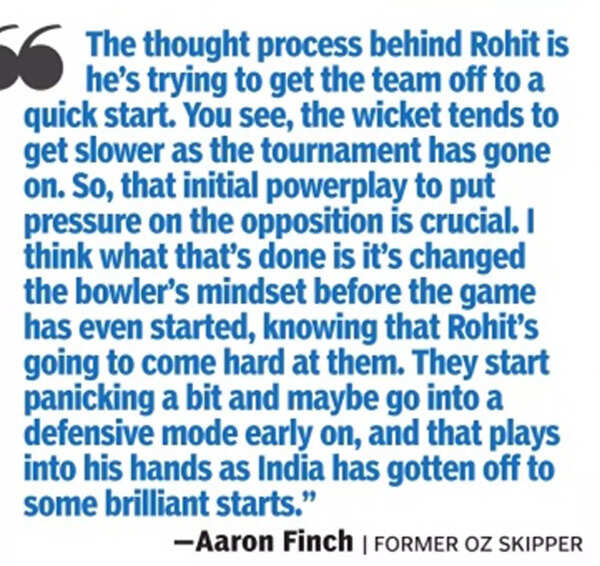
Sacrificing consistency for impact, especially in the powerplay, Rohit has struck 60 sixes this year, surpassing AB de Villiers‘ record of 59. 24 of those sixes have come in the World Cup where he has gone after the rival team’s premier bowlers, taking them down.
That approach has had a trickledown effect. Rohit’s opening partner Shubman Gill has also been more enterprising than usual. Virat Kohli has played a similar role that Joe Root played for England in 2019 and batters like Shreyas Iyer and KL Rahul and Surya Kumar Yadav have batted around him with high strike-rates.
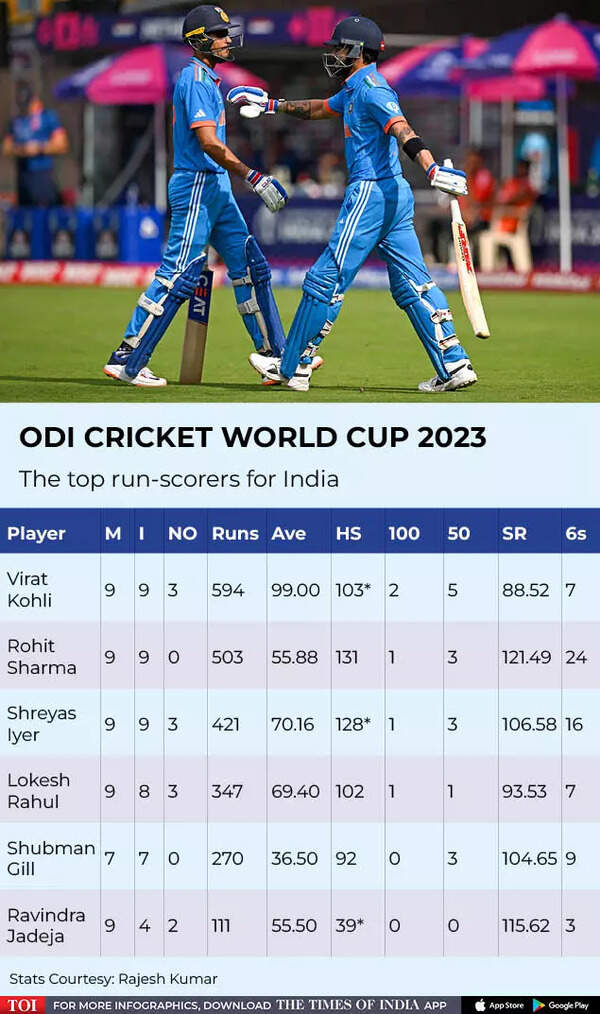
India, of course, do not have a deep batting line-up like England did in the 2019 World Cup and with Hardik injured mid-way through the event, that robbed the hosts of serious hitting power in the middle-order. Yet, they have found a way to out-bat teams in the tournament when batting first thanks to their skipper.
Their incisive bowling attack has ensured that they have never been asked to chase anything more than 273 which New Zealand got in the game against Dharamshala.
With so much riding on the semifinal, a stage that India have slipped on in the last two 50-over World Cups and the last T20 World Cup, one will have to see if India will continue to be bold enough to stick to the template that has brought them success and given fans joy.
The first powerplay with Rohit at the crease will give us that answer.
